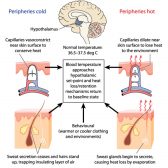Still Water Animals

Underwater ecosystem of Lake Malawi
Through millions of years of evolution, animals living in an aquatic environment have diversified to occupy the ecological niches available in the ecosystem. When studying the habitats of these particular organisms, three main areas of the freshwater environment can be distinctly classified.
- The Profundal Region – An area of still water that receives no sunlight, therefore lacks autotrophic creatures. The animals in this zone rely on organic material as a means of food, which is sourced from the more energy-rich areas above the profundal region.
- The Pelagic Region – The pelagic region can be found below the surface water and is defined by the light that is available to it. The pelagic region does not include areas near the shore or sea bed.
- The Benthic Region – The benthic region incorporates all the freshwater environment in contact with land, barring the shallow shore areas. The benthic region is capable of hosting a large volume of organisms, as nutrient and mineral-rich sediments are available as a food source while part of the benthic region can occupy the euphotic zone, the area of water where light is available. This will allow an ecological niche for autotrophic organisms which in turn can be a food source for herbivores.
Another distinctive niche for the animal community is that above (epineuston) and below (hyponeuston) the water surface. Epineustic animals receive food from the surrounding hydrosere vegetation, where small animals fall into the water from vegetation and are preyed upon by these epineustic animals.
Below these surface-dwelling animals are a collective of animals called the nekton, which live in the pelagic and profundal regions, though rise to the pelagic regions to feed upon these epineustic animals. Fish are included in this nekton community, which plays a vital cog in these freshwater communities. Some of these fish are only temporary members of the community, as they move between fresh and saltwater.
Anadromous fish spawn in freshwater, but live much of their lives in saltwater. Catadromous fish is the opposite of this, and spend much of their lives in the freshwater community. Each way, the fish present in the environment at any time form the link between the upper and lower layers of the freshwater community.
Previous tutorial has described how plants are the primary producers of the freshwater community, harnessing new energy from the sun into the environment. The next tutorial looks at some of the animals that rely on these plants in the community, and animals that survive in the depths of the water and along the water shore and bed.
You will also like...

Plant Tissues
Plant organs are comprised of tissues working together for a common function. The different types of plant tissues are m..

Temperature Regulation in Animals
This tutorial elucidates body temperature regulation. Know the details here to learn how the body sets the body temperat..

Freshwater Community Energy Relationships – Producers & Consumers
This tutorial looks at the relationship between organisms. It also explores how energy is passed on in the food chain an..

New Zealand’s Biodiversity
Find out more about New Zealand's unique biodiversity by exploring a range of different ecosystems and the key role of s..

Ecology & Biodiversity: New Zealand Flora & Fauna
New Zealand is known for its unique biodiversity, caused by its remarkable geography and geologic history. Breaking away..

Freshwater Ecology
Freshwater ecology focuses on the relations of aquatic organisms to their freshwater habitats. There are two forms of co..
